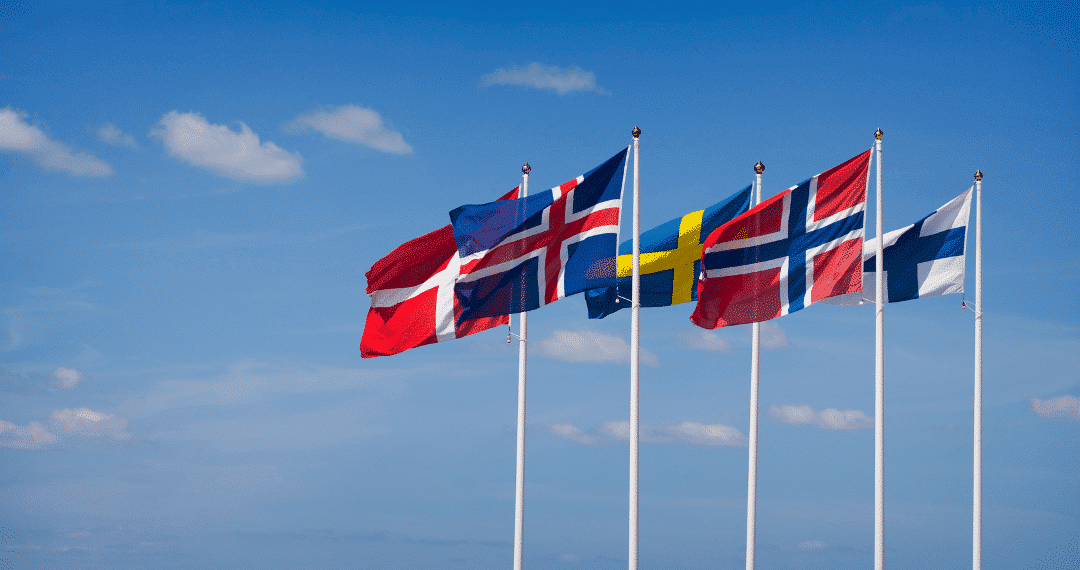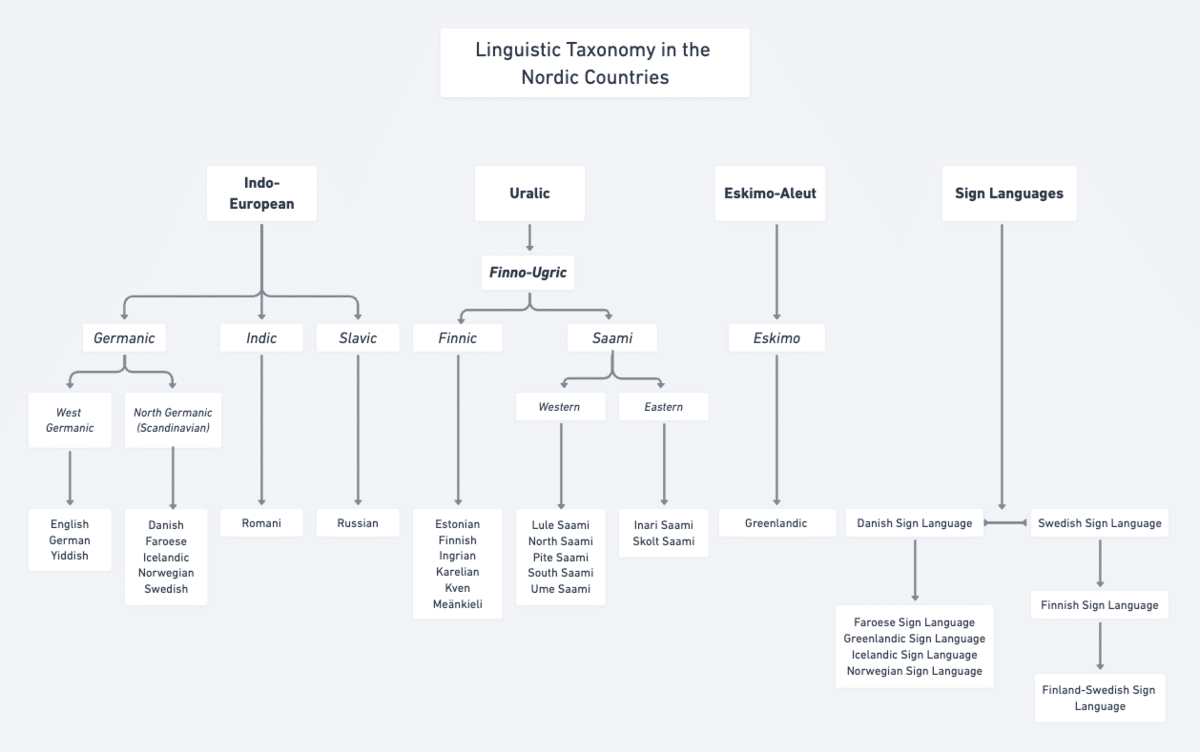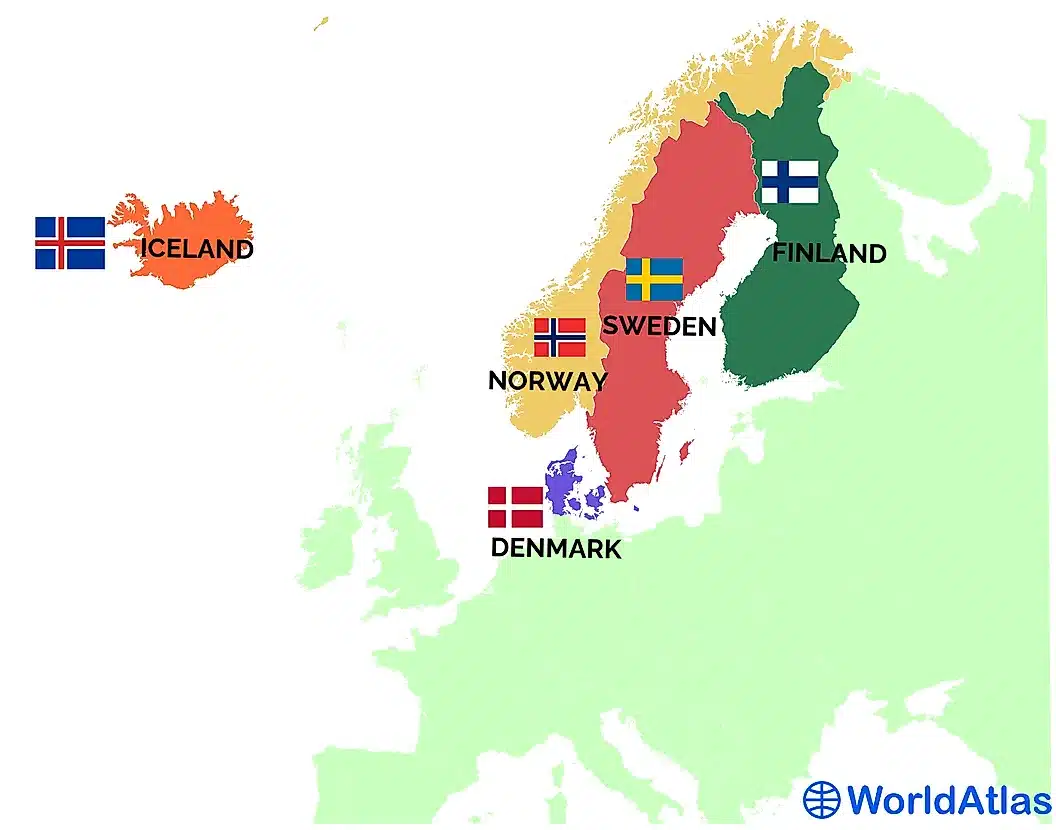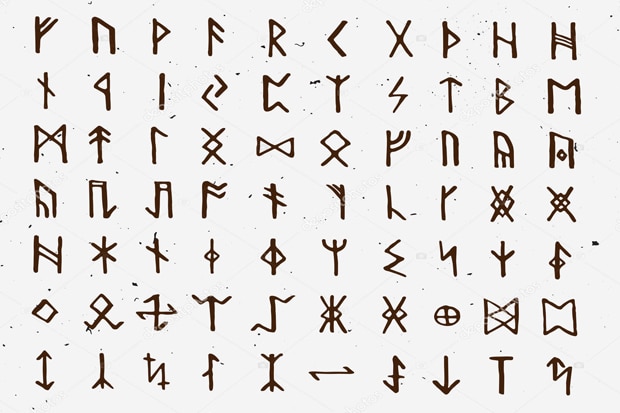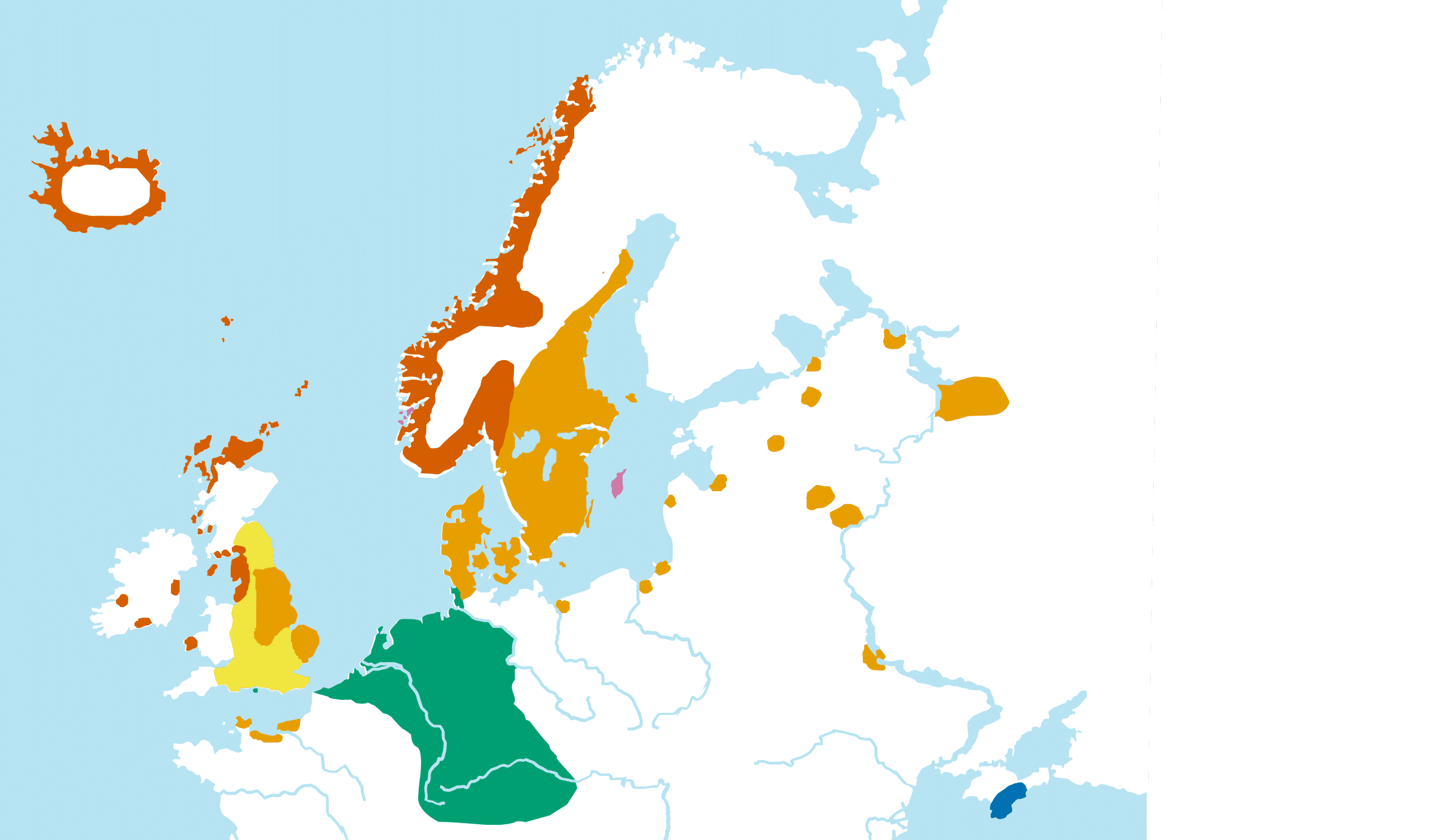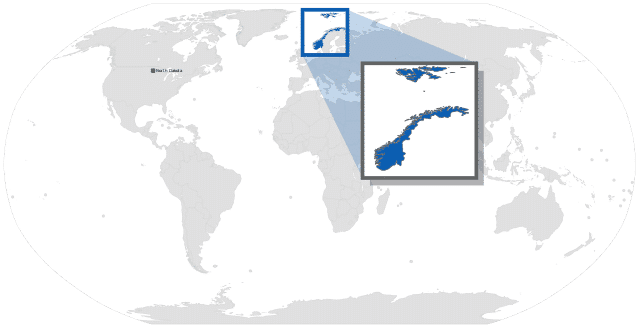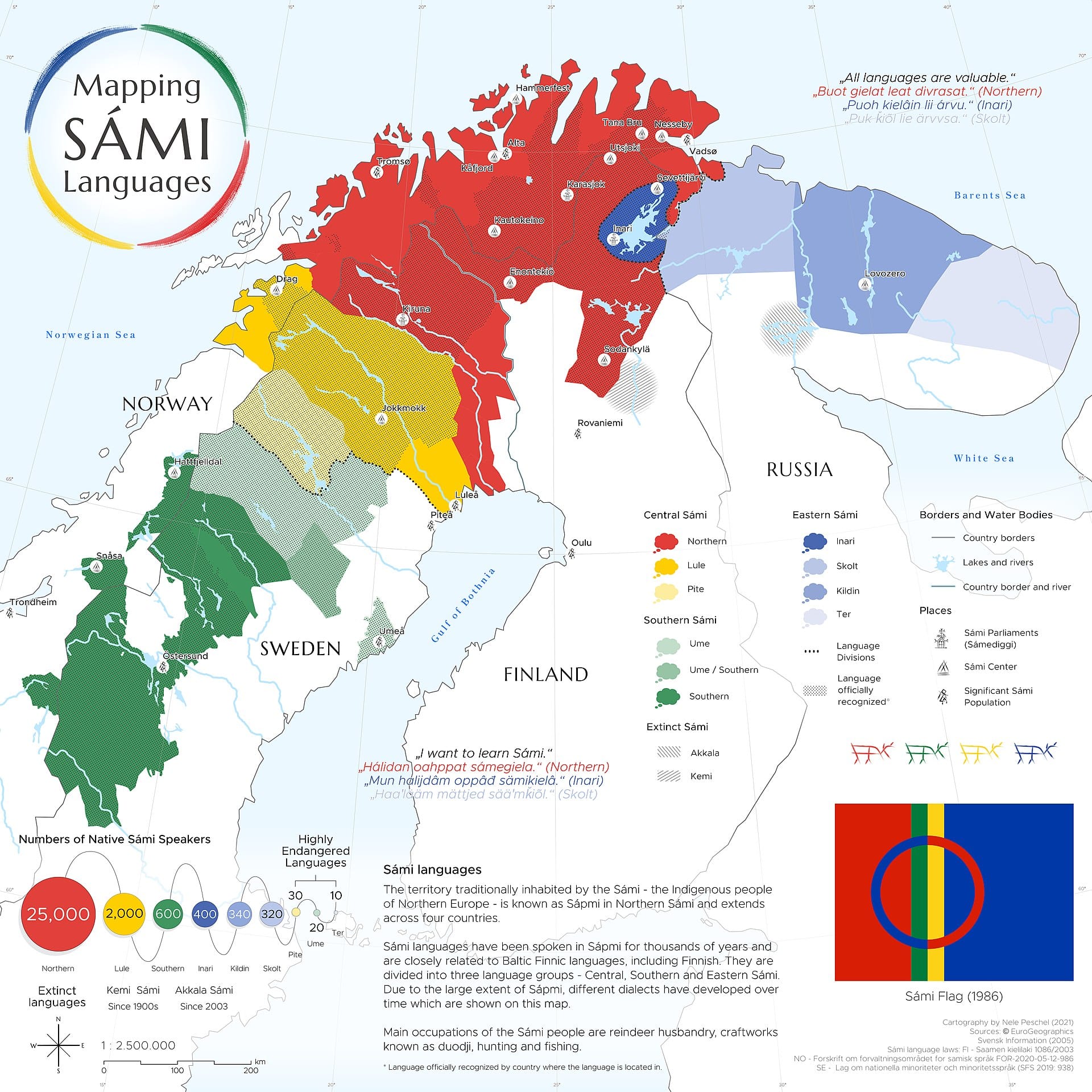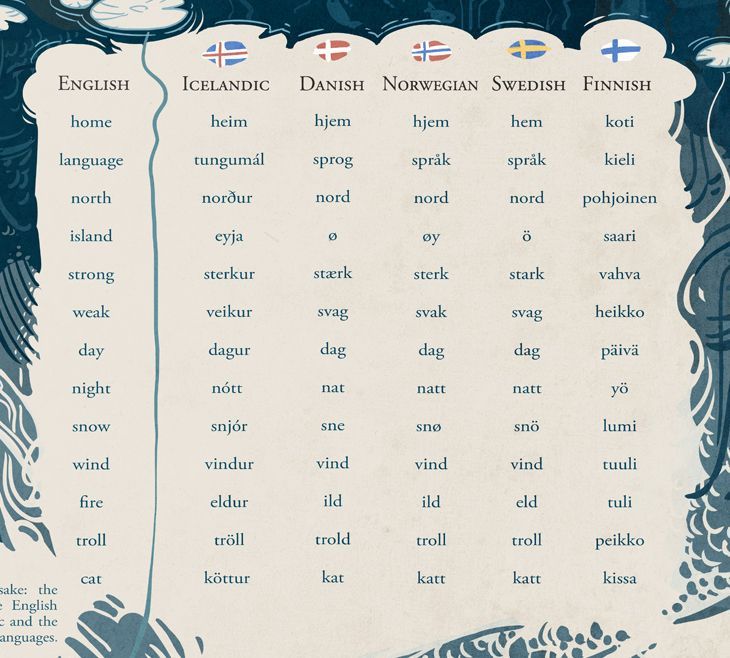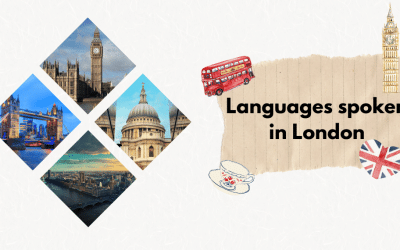There is this widespread misconception that all Nordic languages sound the same.
Well, the Nordic countries share a lot in common in their way of life, religion, history, and social structure. They also have a long history of political unions.
And while they continue to foster their close relations even now, they undoubtedly remain separate states with distinct languages.
The Nordic languages can be divided into two families: North Germanic and Finno-Ugric. The North Germanic family includes Danish, Norwegian, Swedish, and Icelandic while the Finno-Ugric category includes only Finnish.
And although these language families might partially determine the degree of mutual intelligibility, don’t let yourself be misled.
In fact, if you want to learn more about the Nordic languages, keep reading!
In this blog, we are going to investigate the history, current developments, and differences and similarities of the Scandinavian languages.
ARE YOU LOOKING FOR TRANSLATION SERVICES IN NORDIC LANGUAGES?
Milestone helps you seamlessly translate content & localize your website, products, and services for more reach, better conversions, and greater sales.
What are Nordic languages?
The term Nordic languages is used to refer to a group of languages spoken in the countries in the northernmost part of the European continent.
Keep in mind that the term Scandinavian languages refer only to Swedish, Norwegian, and Danish, so it can’t be used interchangeably with the phrase Nordic languages.
Also read: Languages Spoken In Texas & Its Bilingual Education System
The Nordic countries include Sweden, Denmark, Finland, Iceland, and Norway, along with their territories such as Greenland, Åland, and the Faroe Islands.
Most Nordic languages belong to the Indo-European Germanic languages. Finnish and Saami are part of the Finno-Ugric language branch, while Greenlandic is a member of the Eskimo language family.
All Nordic languages currently have about 19 million speakers in total.
Throughout history, the Nordic linguistic communities were constantly changing borders, and thus, they mixed culturally and linguistically for centuries. In that process, their cultures and languages were immensely enriched through shared literature, folklore, and mutual understanding.
Also read: What Are The Most Spoken Languages In Eastern Europe?
The Nordic Languages: A brief history
The Nordic languages originated from Old Norse.
Old Norse is a North Germanic language that was spoken among the people who inhabited the Scandinavian peninsula and Denmark between the 9th and 13th centuries AD. In some places, Old Norse was widely spoken well into the 15th century.
Old Norse was written initially in Younger Futhark runes and later on in Latin.
Old Norse is believed to have three main dialects:
-
Old West Norse (spoken in Sweden and settlements in Ireland, Scotland, the Isle of Man, northwest England, as well as in parts of Normandy)
- Old East Norse (spoken in parts of Norway, Denmark, Sweden, eastern England, and in settlements in Kievan Rus’)
- Old Gutnish (spoken in parts of the Swedish islands Gotland and Fårö).
Old Norse was the language in which all the Norse sagas and the infamous collection of poems ‘Eddur’ were written. Both works describe the epic tales of Viking conquest and exploration.
In fact, the Vikings spoke Old Norse between 793 AD and 1066 AD during the Viking Age. In the following year, the language spread across Norway and the surrounding territories.
As a result of the Viking travels, the Old Norse language reached Britain, Ireland, France, and the Slavic-Finnic federation of Kievan Rus’.
This makes Old Norse the most widely spoken language of the 11th century.
During and after the Viking era, both Sweden and Denmark were political parts of Norway. This, in turn, had a massive influence on the development of these languages.
As time passed, the Old Norse language evolved into several distinct languages, which we today call Icelandic, Faroese, Norwegian, Danish, and Swedish.
Also read: What Are The Fastest Growing Languages?
What are the most spoken Nordic languages?
Swedish
Swedish is the most widely spoken Nordic language. It has about 10 million speakers and is the national language of Sweden as well as one of Finland’s official languages.
Swedish, Danish, and Norwegian are often regarded as sisters due to their common origins. In that regard, Swedish is the oldest of them.
Danish
Danish is spoken by 5 million people and is the official language of Denmark. It is also the second official language of the Faroe Islands and Greenland.
Interestingly, Danish and Swedish share a lot in common when it comes to writing. When spoken, however, they are extremely different.
Out of the three aforementioned languages, Danish is the youngest “sister”.
Also read: Everything About The Languages Of APAC
Norwegian
Around 5 million people speak Norwegian nowadays.
Interestingly, in the 1800s, after Norway gained independence from Denmark, two languages emerged. One was similar to Danish and was spoken in the cities, while the second was spoken mainly by the people in the countryside.
After Norway’s independence, many language reforms were issued, which eventually resulted in the establishment of one common language in the country.
Icelandic
Icelandic is the only language in the Nordic language family that closely resembles Old Norse or the language of the Vikings.
With only 50,000 native speakers, Icelandic is the least widely spoken language of all the North Germanic languages.
Finnish
Finnish is spoken by 5 million people.
Interestingly, Finnish is only distantly related to Danish, Norwegian, Swedish, and Icelandic since it belongs to a different language family and thus has a different origin.
The Finnish language has two varieties: a formal version, used by the media and politics, and a spoken version, which is a colloquial version used by the common people.
Also read: Language vs Accent vs Dialect: What Is The Difference?
What are the least spoken Nordic languages?
Faroese
Faroese is the language of the Faroe Islands. Approximately 75,000 to 80,000 people speak Faroese.
The language is of great importance to the local people in preserving the local culture and identity of the region. Thus, Faroese is highly regarded by the government.
It is very similar to Danish, Norwegian, and Swedish, especially when it comes to vocabulary and grammar.
Greenlandic
Greenlandic is an Eskimo-Aleut language and is spoken by around 60,000 people throughout Greenland and Denmark.
The language has three main dialects:
- West Greenlandic is the preferred dialect, used in schools throughout Greenland, and is spoken by 53,000 people in the areas of Nuuk, Sisimiut, and Kangerlussuaq.
- East Greenlandic is spoken by 3,000 people in Tasiilaq.
- North Greenlandic is spoken by only 1,000 people in Qaanaaq and Nord.
Sami/Saami languages
Central Sweden, Mid-Southern Norway, and the top of the Kola Peninsula of Russia are the main territories where the Saami language is spoken.
This Fenno-Ugrian language is spoken by roughly 30,000 people.
In the region, there are approximately 10 Saami languages or varieties identified. Only six of them have a written form.
The language is slowly being revived in these areas.
Meänkieli
There are up to 70,000 Meänkieli speakers, primarily in northern Sweden.
This language is a variety of Finnish. It shares a lot in common with Finnish in terms of structure and grammar. However, its vocabulary is highly influenced by spoken Swedish.
Meänkieli is used in textbooks and in schools along with Swedish. The language is, however, not used outside of the educational system.
Meänkieli is also known as Mean Kieli, MTI, or Tornedalen.
Kven
The Kven language is spoken by the people of northern Norway and is considered a minority language.
It has between 1,500 and 10,000 speakers, and most of them are over the age of 60. There are concerns that the language will die out as the older generation passes away.
Nordic languages in Europe
Danish, Finnish, and Swedish are among the official languages of the European Union.
What’s more, Danish is an official minority language in the German federal state of Schleswig-Holstein. Since 2015, Danish has been one of the official languages in the South Schleswig region.
Finnish is officially recognized as a minority language spoken in the Republic of Karelia, situated in the North-West part of Russia.
Also read: German vs Russian: Which Language Has A Brighter Future?
GET YOUR SURVEY TRANSLATED BY PROFESSIONALS
Our team of expert professionals will help you seamlessly translate your survey into 70+ languages with the highest quality and accuracy.
Similarities & differences between the Nordic languages
A lot has been said about the similarities and differences between the Nordic languages. However, there is no definite answer.
So let’s have a look at the most widely spoken Nordic languages and compare them.
Pronunciation
When it comes to pronunciation, Danish is the language that stands out the most out of all the Nordic languages.
In Danish, there is a large discrepancy between the spoken and written language. Simply put, when listening to Danish, one would notice that the words are shortened, the consonants are softened and the endings are often completely omitted.
For Swedish and Norwegian speakers, the Danish pronunciation can be quite confusing. Have a look:
In Swedish, “Hello, what’s your name?” is translated as “Hej, vad heter du?” while a Danish person would say “Hej, hvad hedder du?”. Both are written very similarly, right?
A Swedish person would pronounce this sentence the way it is written. In Danish, however, it would sound something like “Hai, vel he-ugh du?”.
And while some would argue that it is not so different, you should keep in mind that this is a fundamental question. Once the conversation involves more abstract concepts and more complex topics, it will be nearly impossible to understand.
Also read: Slavic Languages: Everything You Need To Know
Vocabulary
Indeed, there are quite a few false friends you need to watch out for.
For example, if a Norwegian and a Swede agree to do something “roligt” together, both of them would expect two completely different things. For Swedish people, this means “fun” while a Norwegian person would understand it as “calm” or “relaxing”.
Another example is the word “rar” which in Norwegian means “strange” while in Danish it means “nice” or “cute”.
Orthography
Despite the differences we discussed earlier when it comes to writing and orthography, Danish and Norwegian are almost identical.
The reason behind their similar scripts is that Norway was part of Denmark between the 14th and 19th centuries. Since the kingdom’s administrative and intellectual power was centred in Copenhagen, the Danish language was established as the norm.
Interestingly, the geographical proximity of Sweden to Norway has also played a role in the written form of the Norwegian language.
Are Nordic languages mutually intelligible?
The degree of mutual intelligibility between two or more languages depends on several factors, such as common origin, geographical proximity, status, interactions, etc.
Having this in mind, we can say that many of the Nordic languages are (closely) related and situated nearby.
But is that enough to deem them mutually intelligible?
For instance, the linguistic communities of Norwegian, Swedish, and Danish, as we have already seen, are often referred to as the three sisters due to their common history.
And while they share a lot of similarities in terms of orthography and, to some extent, pronunciation and vocabulary, we need to take into consideration that our expectations of and attitudes towards the degree of mutual intelligibility also play a role.
In other words, how often a person encounters other languages in their day-to-day life can have a massive impact on their comprehension.
The reality is that while the Nordic countries are well-connected, their languages remain distinct and, thus, rather different from one another.
Therefore, it would be fair to say that speakers of different Nordic languages would have some difficulty understanding each other’s languages.
Also read: German vs Polish: How Different Are These Two Languages?
Conclusion
The Nordic languages share common origins and histories, which, in turn, are now visible in terms of many similarities in their written and/ or spoken forms.
Nevertheless, the Nordic languages remain distinct, and as such, certain differences might hinder communication.
Therefore, it is always advisable to rely on a skilled and experienced translator who can understand all the nuances of the meaning of each Nordic language.
ARE YOU LOOKING FOR TRANSLATION SERVICES IN NORDIC LANGUAGES?
Milestone helps you seamlessly translate content & localize your website, products, and services for more reach, better conversions, and greater sales.

